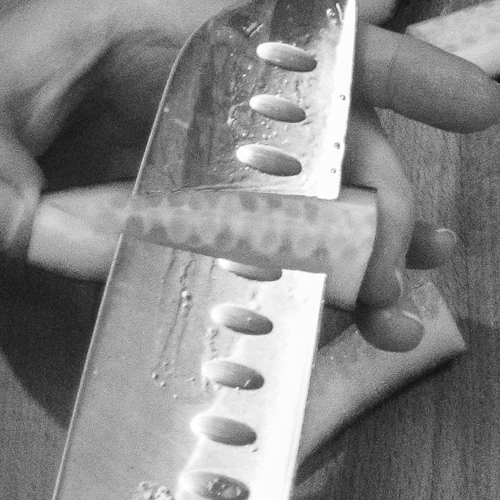I recently joined a fermentation course because being a part owner of a community supported agriculture, vegetables peter out at the end of October such that I need to buy from a supermarket or a company, which sells them all year. By fermenting wild edible plants and vegetables from a field, it should be possible to have locally grown vegetables available from November to April (ideally speaking).
Having entered the premises, everyone should give a short presentation of themselves and why they were taking this course. It turned out that most of them had digestion problems and they wanted fermented vegetables to improve their digestion. Next, Bente Brunvoll, who was arranging the course, gave a short introduction to fermentation and its beneficial effects on our health:
– Research has shown that 70-80% of our immune system is located in the bowels.
– Fermentation makes food contain beneficial bacteria, more vitamins, longer shelf life and easier to digest.
– Beneficial bacteria, particularly those in our gut, may improve digestion and boost immunity to diseases.
– The beneficial bacteria, which are called lactic acid bacteria can withstand salt and no fresh air, while harmful bacteria will die. Fermented food is good for our guts, immune system, skin, mood and health in general.
Next, each of us had a wooden board, a glass bowl and a big kitchen knife and we should start by making sauerkraut. This work was like the following:
– cutting up a cabbage and carrots, no peeling, just rinsing.
– taking off the outer leaves of the cabbage.
– putting the cabbage cuts in a bowl with the carrot parts.
– crushing the parts with a wooden stick and using fists and hands.
– putting everything into a jam glass and compressing the contents.
– adding sea salt.
– adding a leaf of cabbage on the top.
– adding boiled, but cool water.
– putting in a glass weight.
– putting on a lid.
Some liquid emerged when the cabbage was compressed in the bowl and it was poured into the glass together with the vegetable parts.
Next, we should prepare cucumber:
– divide it into 3 parts of about the same length.
– cut away the inner, soft part.
– divide a garlic bulb into garlic cloves, peel each clove and put them into a glass.
– lay leaves of laurel, seeds of coriander, pepper, horse radish and dill in the same glass.
– put the cucumbers in the glass.
– mix water, whey and salt and pour the mixture into the glass.
– lay a cabbage leaf on the top and put on a lid.
Then, we should prepare beet juice following this procedure:
– rinse the skin.
– cut off the root and stem and any stains on the surface.
– slice up a beet into quarters.
– put the beet quarters in a glass.
– add cinnamon, turmeric, ginger and whey.
– add a mixture of water and sea salt.
– put some cabbage leaves and a glass weight on the top.
– put on a lid.
Finally, we should prepare kefir by doing the following:
– lay some kefir grains in a small glass.
– pour some milk into the glass such that it covers the grains.
– put on a lid.
Having got three big glasses and a small one, it was time to carry everything home. Bente advised us to open the lids carefully and let out cabon dioxide, which is formed during fermentation. This is necessary in order to prevent excess pressure from forming inside the glass. While the glasses with cucumber and beet hardly contained any cabon dioxide, the sauerkraut was very active. Just barely opening the lid, made gas escape with a wheezing sound toghether with liquid, which flowed out.
Now I’ve let all the glasses stay in a fridge, just waiting a week or two more before everything should be ready. I found preparation of the vegs for fermentation very easy and I recommend doing it for everyone who wants to eat fermented vegs.
There are several web sites which promote fermentation of vegetables:
EatingWell
Wellness Mama
Mercola
ConsumerHealthDigest
Cooking God’s Way

